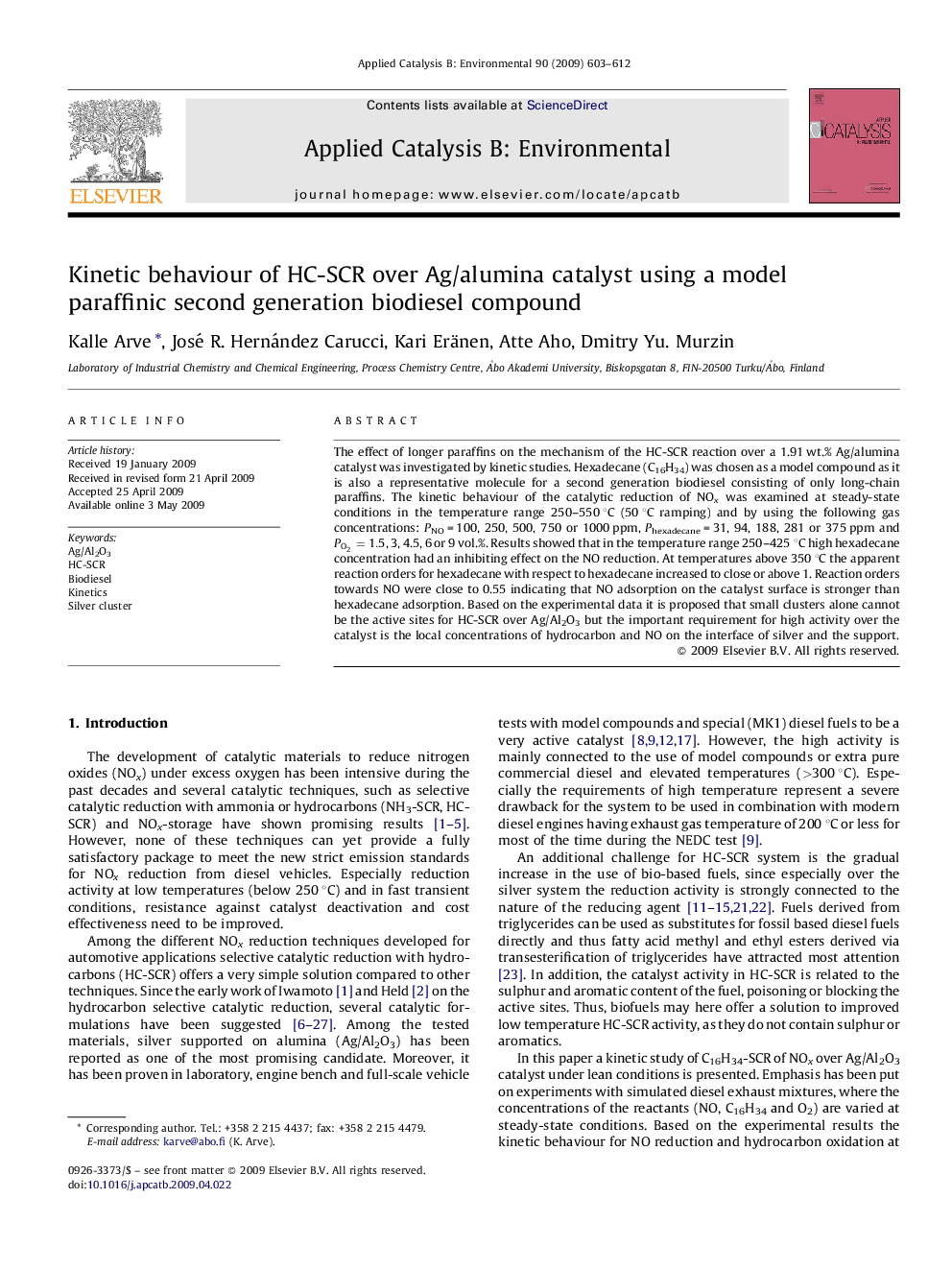| Article ID | Journal | Published Year | Pages | File Type |
|---|---|---|---|---|
| 47670 | Applied Catalysis B: Environmental | 2009 | 10 Pages |
The effect of longer paraffins on the mechanism of the HC-SCR reaction over a 1.91 wt.% Ag/alumina catalyst was investigated by kinetic studies. Hexadecane (C16H34) was chosen as a model compound as it is also a representative molecule for a second generation biodiesel consisting of only long-chain paraffins. The kinetic behaviour of the catalytic reduction of NOx was examined at steady-state conditions in the temperature range 250–550 °C (50 °C ramping) and by using the following gas concentrations: PNO = 100, 250, 500, 750 or 1000 ppm, Phexadecane = 31, 94, 188, 281 or 375 ppm and PO2=1.5PO2=1.5, 3, 4.5, 6 or 9 vol.%. Results showed that in the temperature range 250–425 °C high hexadecane concentration had an inhibiting effect on the NO reduction. At temperatures above 350 °C the apparent reaction orders for hexadecane with respect to hexadecane increased to close or above 1. Reaction orders towards NO were close to 0.55 indicating that NO adsorption on the catalyst surface is stronger than hexadecane adsorption. Based on the experimental data it is proposed that small clusters alone cannot be the active sites for HC-SCR over Ag/Al2O3 but the important requirement for high activity over the catalyst is the local concentrations of hydrocarbon and NO on the interface of silver and the support.
